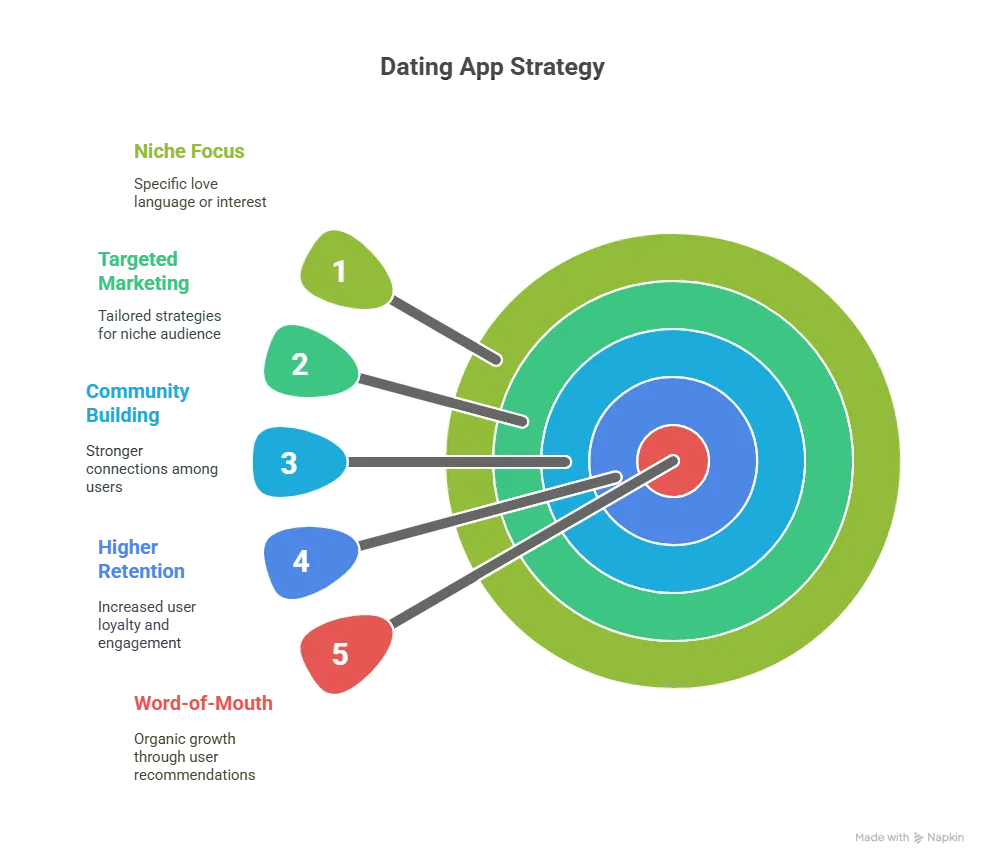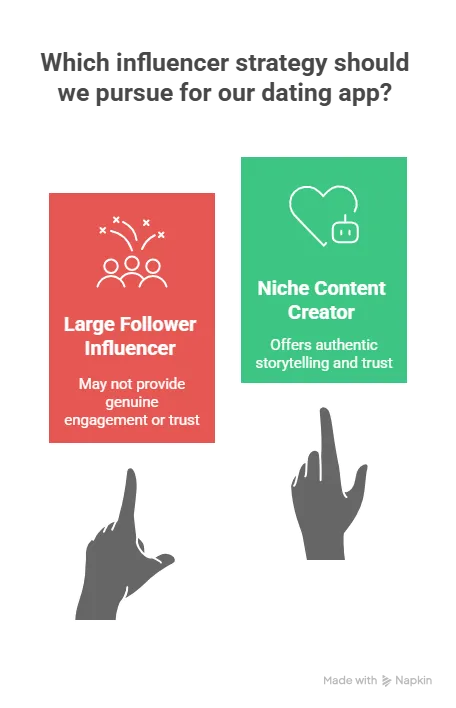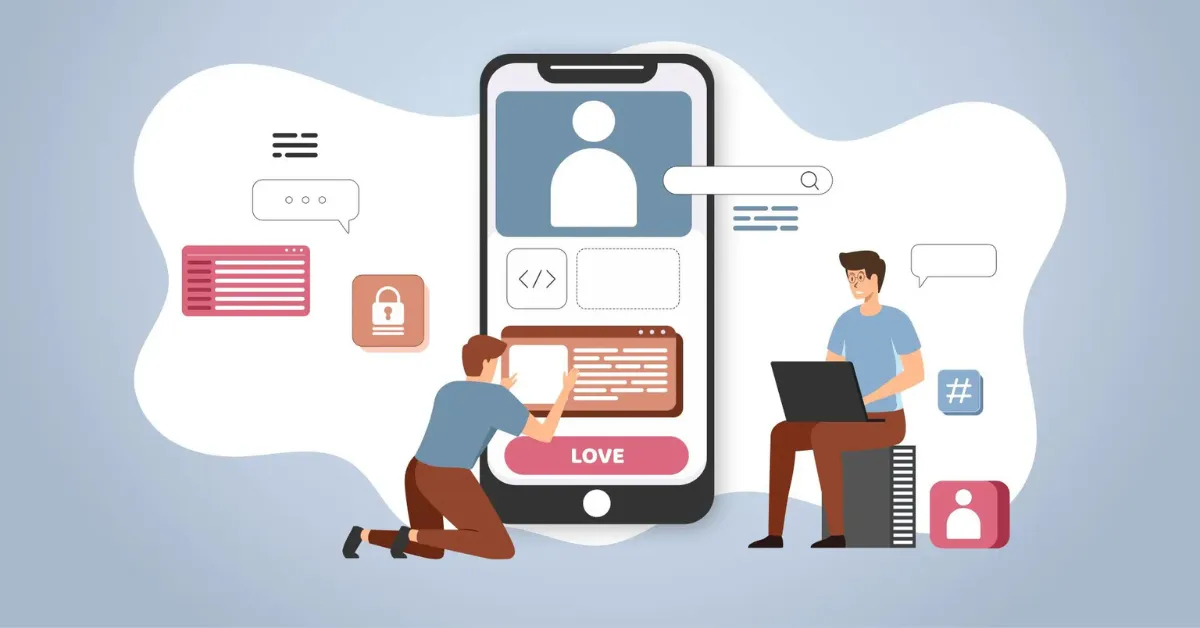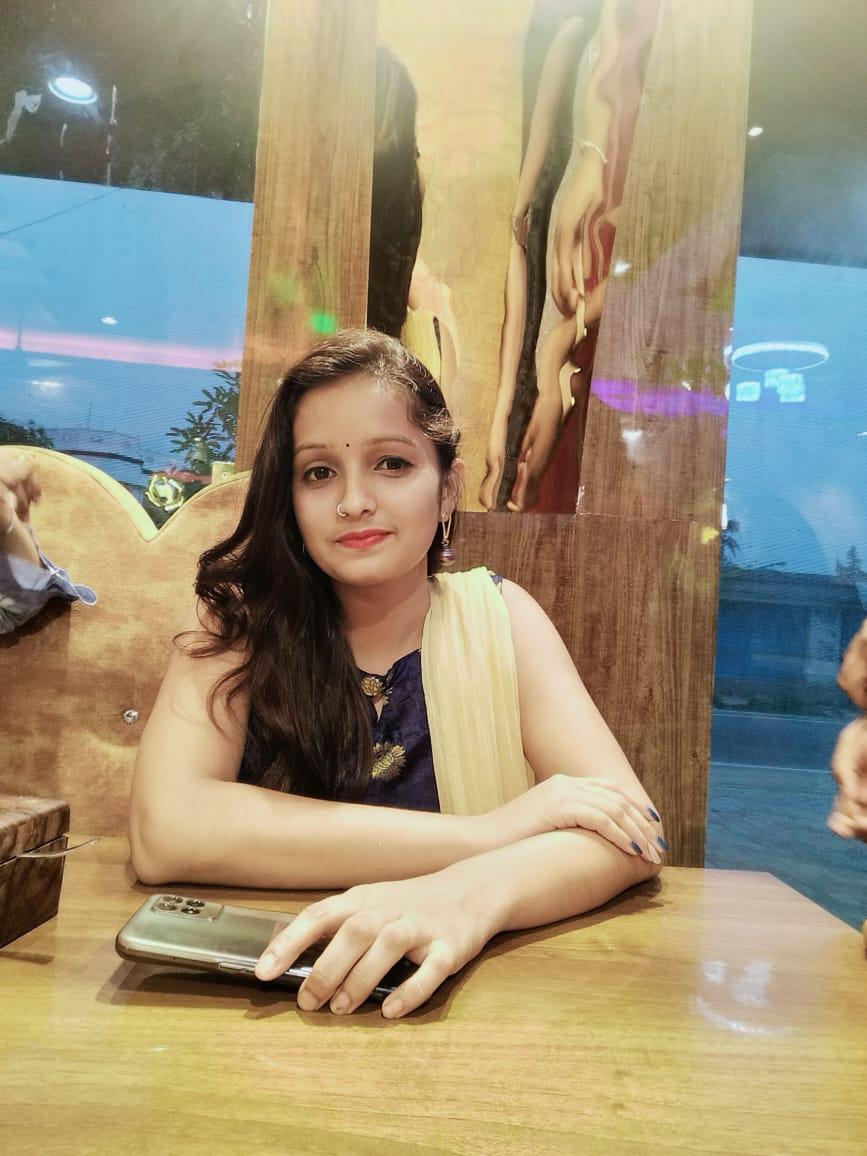So, your dating app is finally live. Profiles are set, swiping works like a dream, and the interface is sleek enough to make a UX designer cry happy tears. But here’s the harsh truth: dating apps don’t market themselves. Love might be in the air, but users? They’re still on Tinder, Bumble, or stuck in DMs on Instagram.
Building a matchmaking platform—whether you’re targeting serious relationships, casual connections, or community-based dating—isn’t just about algorithms. It’s about trust, timing, and traction. And after launch, your real job begins: convincing people to give love (and your app) a chance.
At Miracuves, we’ve worked with founders launching Tinder clone apps and custom matchmaking platforms across the globe. We’ve seen what works, what flops, and what truly gets people to swipe right on your product.
Start With a Specific Love Language

Generalist dating apps are a crowded, over-saturated space. If you’re trying to appeal to everyone, you’re appealing to no one.
Your best bet? Go niche. Launch with a clear focus. This could be:
- Faith-based dating (like Muzmatch)
- LGBTQIA+ connections (like HER)
- Career-driven singles (like The League)
- Hobby-driven love (gamers, pet lovers, travelers)
A niche allows you to create targeted marketing, use the right language, and build a community with instant common ground. Plus, smaller, focused platforms often enjoy higher retention and stronger word-of-mouth.
Prioritize Safety and Trust in Your Messaging
The biggest hurdle new dating apps face isn’t functionality—it’s credibility.
Before people swipe, they need to trust. Is this platform safe? Are the users real? Are the intentions honest?
Highlight safety features clearly: profile verification, selfie checks, human moderators, in-app reporting. Feature testimonials that speak to comfort and experience—not just matches.
“Real people. Real safety. Real connections.” That should be the vibe across your app store listing, website, and social channels.
Read More : Revenue Model for Dating App and Matchmaking Platform
Seed With Verified, Active Profiles
A dating app with no active users is like a party where everyone’s staring at their phones—not ideal.
Before launch, onboard a group of real users. Yes, manually. Friends, coworkers, volunteers—help them create great profiles. Offer incentives. Guide them through onboarding. Ensure gender balance if your app is gender-paired.
The goal is to avoid the “ghost town” effect. Your early users are your ambassadors—if their first 10 swipes are meaningful, they’re more likely to stick around.
Lean Into Emotional Storytelling
Love isn’t transactional. So why does your marketing feel like a SaaS ad?
Emotion sells in dating. Create campaigns around stories, not stats:
- “We met because we both loved old-school jazz.”
- “She messaged first, and that changed everything.”
- “I’d given up on dating apps—until this one.”
Encourage users to share first-date photos, messages that made them smile, or even “almost love” stories. Build your brand as human, warm, and relatable. People don’t want features—they want feelings.
Read More : How to Start a Dating & Relationship Platform Business
Run Geo-Targeted Campaigns
No one wants to download a dating app and find zero matches within 100 miles.
Post-launch, prioritize hyper-local marketing. Focus on one city or region at a time. Use Instagram and Facebook Ads to target by zip code or city center. Use creatives that mention the location: “Meet Mumbai singles tonight” or “Chicago’s new dating hotspot.”
Host real-world meetups, launch parties, or swipe mixers in key locations. Build density before expanding.
Make User Onboarding Feel Like Magic
That first 2–3 minutes after sign-up? That’s make-or-break time.
Guide users through profile setup with smart prompts: favorite date ideas, music tastes, what they’re “really looking for.” The more engaging the profile, the better the matches—and the more likely they are to stick around.
Use playful copy. Add emojis. Make it feel like a conversation, not a form. And reward profile completion with early matches, badges, or visibility boosts.
Create Moments for Virality
Virality in dating apps comes from emotional moments—surprise matches, funny bios, shareable “first message wins.”
Add features that encourage this:
- Shareable match cards: “We matched on [AppName]!”
- Screenshot-friendly profile quotes
- In-app prompts like “Tell us your worst date story”
Also, let users refer friends and get rewarded. “Wingman” invites are a fun way to grow the base while giving users a reason to invite quality matches into the ecosystem.
Influencers? Choose Carefully

A fashion influencer with 500k followers may not move the needle. But a local TikTok creator with 10k followers talking about dating horror stories or doing “Day in the Life of a Single” content? That’s your goldmine.
Collaborate with content creators in relationship, self-love, or lifestyle niches. Let them walk through your app. Run challenges: “Rate my dating profile” or “Blind date through [AppName].”
Genuine storytelling trumps paid placement—especially in a trust-based product like dating.
Monetize Later, Not First
Yes, you need to make money. But asking new users to pay before you’ve given them value is a dealbreaker.
Start with a free model. Focus on engagement, success stories, and habit loops. Then, once your users are emotionally invested, introduce monetization:
- Visibility boosts
- Super likes
- Premium filters (interests, location, lifestyle)
- Read receipts
Test pricing carefully. And always make the free version feel worthwhile. No one likes a paywall on love.
Read More : How to Develop a Dating and Matchmaking Platform App That Users Love
Final Thoughts
Marketing a dating app is about more than downloads. It’s about creating the spark—and keeping it alive.
Don’t just build a product. Build trust. Build stories. Build a brand that understands love isn’t just a swipe—it’s a journey.
At Miracuves, we help innovators launch high-performance app clones that are fast, scalable, and monetization-ready. Ready to turn your idea into reality? Let’s build together.
FAQ
Still have questions about marketing a dating app? Let’s clear them up.
What’s the hardest part about launching a dating app?
Getting your first 1,000 active users. Balance, activity, and quality are crucial to early retention.
Should I charge users from day one?
No. Focus on building value and emotional buy-in first. Monetize once your user base is engaged.
How do I keep users from ghosting after one use?
Use great onboarding, dynamic matches, push notifications, and interactive features like prompts and icebreakers.
What makes a dating app go viral?
Shareable stories, funny content, emotional resonance, and community-led buzz. It’s not just features—it’s moments.
Can I target specific communities?
Yes. In fact, niche targeting often leads to stronger growth. Focus on location, identity, or interests.
Do you offer help beyond development?
Absolutely. Miracuves supports founders with go-to-market planning, user acquisition, and growth strategy post-launch.
Related Articles
- Best Tinder Clone Scripts in 2025: Features & Pricing Compared
- Best Cameo Clone Scripts in 2025: Features & Pricing Compared
- Best Fansly Clone Scripts in 2025: Features & Pricing Compared
- Best Fancentro Clone Scripts in 2025: Features & Pricing Compared
- Best IsMyGirl Clone Scripts in 2025: Features & Pricing Compared








